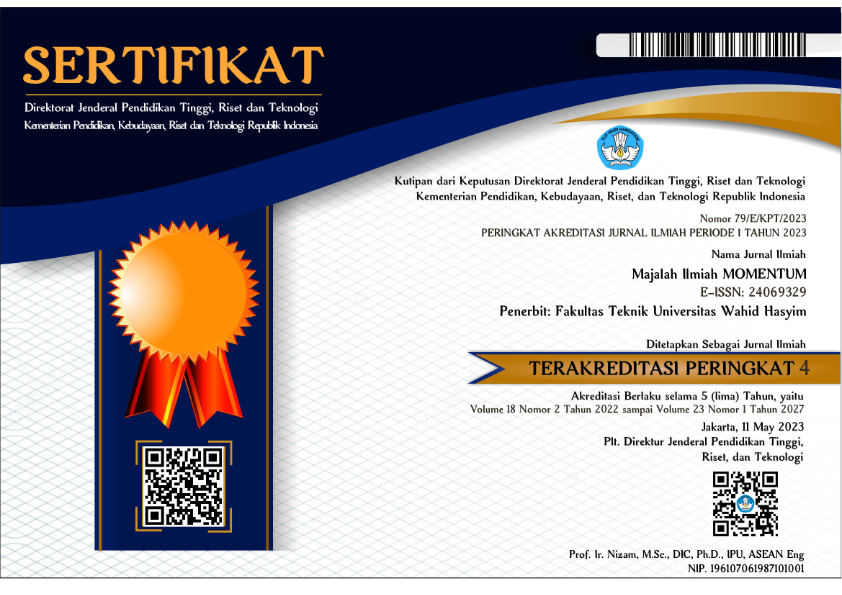WASTE TO ENERGY : RECOVERY DAN ELEKTROLISA AMONIA DARI LIMBAH PABRIK PUPUK UNTUK MENGHASILKAN HIDROGEN
DOI:
https://doi.org/10.36499/jim.v6i1.124Abstract
Limbah dengan kandungan ammonia sangat berbahaya jika tidak diolah dengan baik. Limbah ini dapat berasal dari peternakan, rumah potong hewan, plant ammonia, plant pupuk dan pertania . Selama ini limbah dengan kandungan ammonia diolah dengan cara biologi ( nitrifikasi /denitrifikasi ) dan dengan ion exchanger. Elektrolisa ammonia merupakan salah satu cara alternative untuk mengolah limbah terutama limbah dari plant pupuk dan plant ammonia .Proses ini menghasilkan hydrogen yang dapat digunakan sebagai bahan bakar fuel sel sehingga dihasilkan listrik yang dapat dipergunakan oleh plant. Proses elektrolisa amonia menghemat energi 95,3% serta harga hidrogen yang lebih murah 87,3 % jika dibandingkan dengan proses elekrolisa air untuk menghasilkan hidrogen. Kata Kunci : Elektrolisa, Amonia, HidrogenDownloads
Published
Issue
Section
License
Authors who publish with this journal agree to the following terms:
The journal allow the authors to hold the copyright without restrictions and allow the authors to retain publishing rights without restrictions.
Authors retain copyright and grant the journal right of first publication with the work simultaneously licensed under a Creative Commons Attribution License that allows others to share the work with an acknowledgement of the work's authorship and initial publication in this journal.
Authors are able to enter into separate, additional contractual arrangements for the non-exclusive distribution of the journal's published version of the work (e.g., post it to an institutional repository or publish it in a book), with an acknowledgement of its initial publication in this journal.
Authors are permitted and encouraged to post their work online (e.g., in institutional repositories or on their website) prior to and during the submission process, as it can lead to productive exchanges, as well as earlier and greater citation of published work (See The Effect of Open Access).

This work is licensed under a Creative Commons Attribution 4.0 International License.







